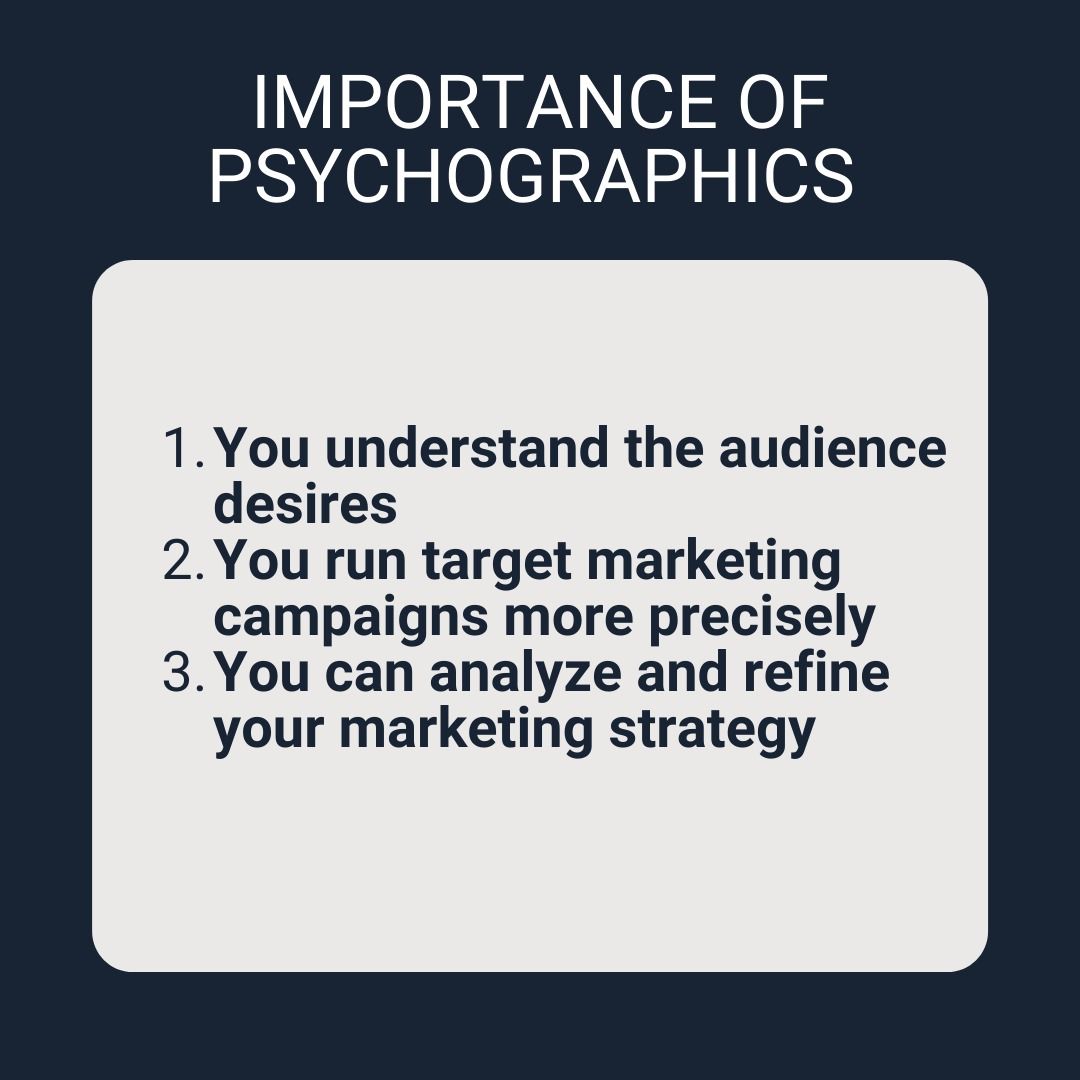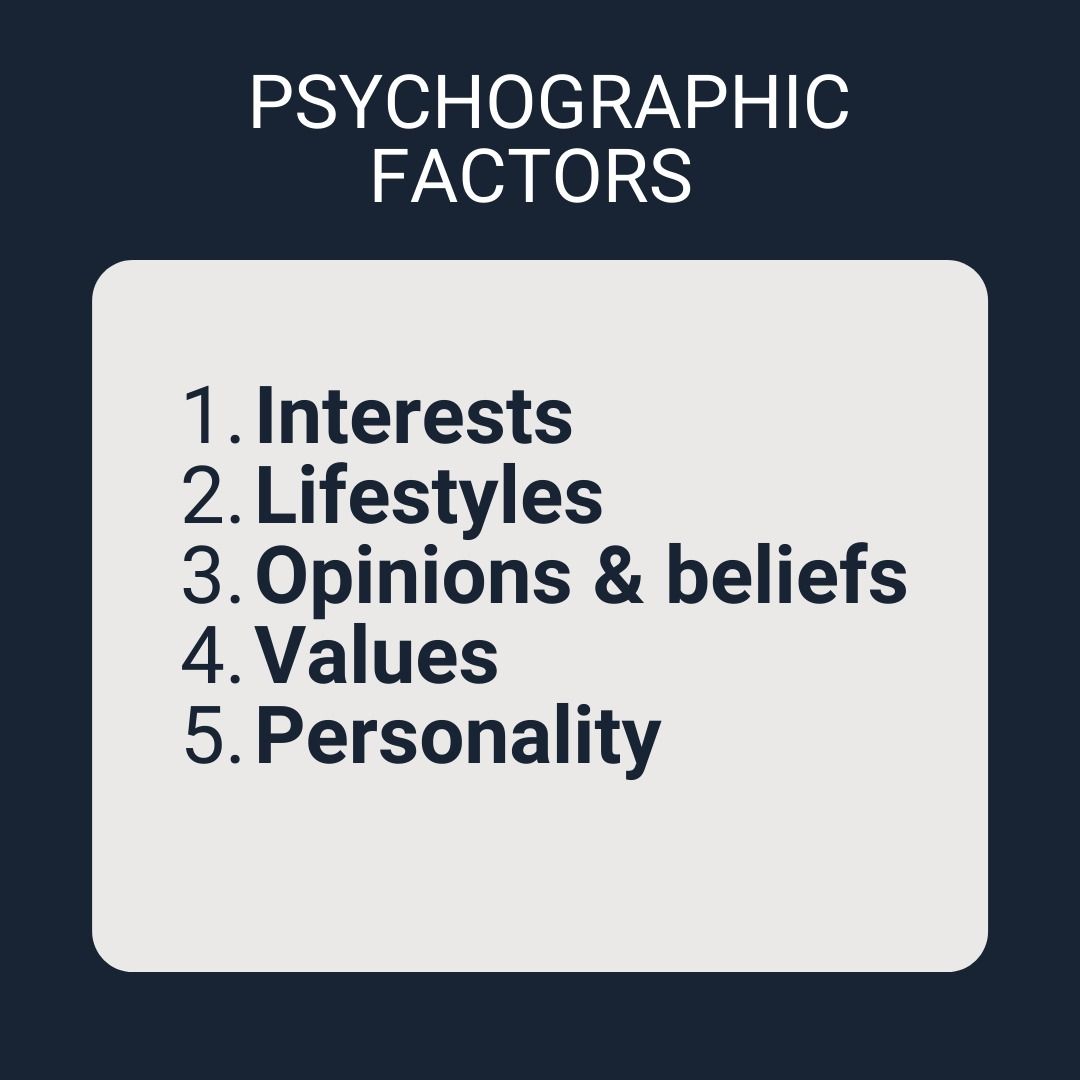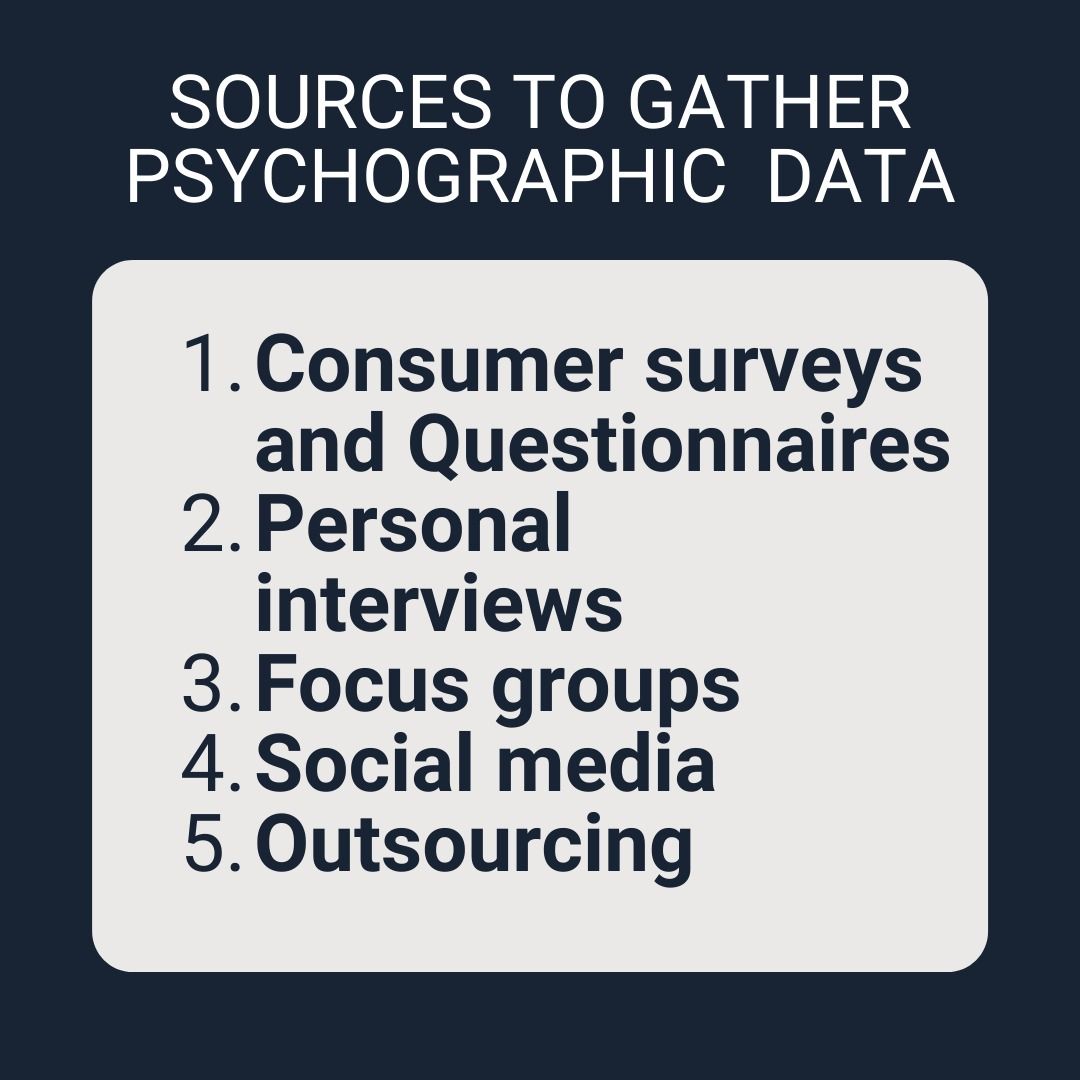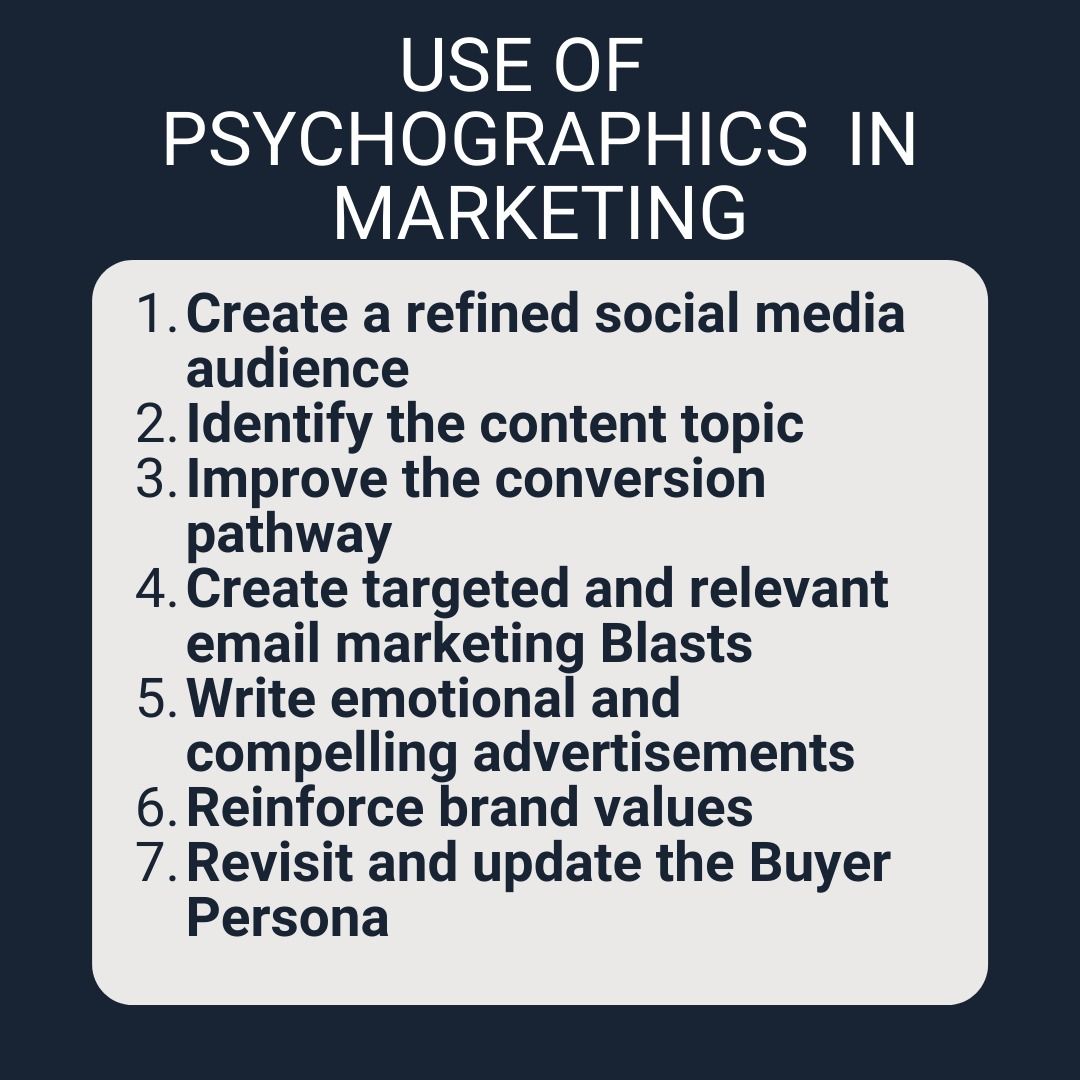Before selling your product or service, do you consider your customer's personas?
If yes, you are already ahead of knowing your customers, their behavior, and habits, which allows you to market your products or services much more effectively.
All of these actions of customers are a result of two types of customer data, one is demographics and the other is Psychographics.
Talking about demographics, it is a study of customers' age, ethnicity, and education. But when we come down to Psychographics, it is one of the most underrated yet exceptionally valuable in terms of marketing and target audience.
In this article, we will especially focus on understanding and learning the people's perspective on buying the products and the medium of buying the products. Brands and companies can use these insights to do impactful marketing.
The article will cover the following:
• What is Psychographics & why is it important?
• How Psychographics is different from demographics?
• What are psychographic factors that influence buying behavior?
• What are sources to gather Psychographic data with examples?
• 7 Ways in which Marketers use Psychographics in Marketing
What is Psychographics & why is it important?
Psychographics is a qualitative method of studying consumers based on their psychological characteristics and traits like values, interests, desires, goals, and lifestyles.
In other words, it is an evaluation to identify an audience's beliefs and emotions, highlighting their interest, activities, and opinions.
As far as Psychographics in marketing is concerned, it focuses on understanding the customers' emotions and what they feel about the particular brand, product or service. Based on their psychological traits, the brand can leverage the opportunity to market more accurately.
Briefing down the importance of Psychographics in marketing, the brands can position and personalize their product accordingly. With the help of psychographic data, you can fill in the pieces of audience puzzles and research well about their thinking and feelings towards the brand.
Let's explore three major reasons that state the importance of Psychographics in marketing:
- You understand the audience desires
- You run target marketing campaigns more precisely
You can analyze and refine your marketing strategy

1. You understand the audience desires
Understanding audience desire is the most significant importance of Psychographics in marketing. With psychographic data, you can figure out what needs to draw your audience towards you and what kind of desire they have in completing the purchase.
For example, if your target audience is buying a scooter, then you cannot simply share a piece of hazy or incomplete information.
If you share the information that exactly meets the audience's desires, you are good to guide them to make the final decision.
2. You run target marketing campaigns more precisely
Once you know what your audience needs, you can use psychographic targeting to reach the audience and effectively create marketing campaigns at a more precise level.
For example, if there is a festive season, you can create sale campaigns to attract the audience focusing on the particular group.
3. You can analyze and refine your marketing strategy
Indeed, every marketing campaign won't give you the same results. You can analyze the metrics and set a new audience to guide them for the specific products and services based on Psychographics. Overall, it can help you refine your marketing strategy and segment your audience in the future.
Once you understand your target audience and what they expect from you, your pathway towards marketing becomes smooth. It helps you build a robust user persona and enables you to craft the right message at the right place.
This is why Psychographics play a vital role in analyzing the actionable buyer persona.
How is Psychographics different from demographics?
When we talk about demographic data, it relates to the structure of the population, which includes age, race, gender, and income. In contrast to demographics, Psychographics majorly covers opinions and interests.
Marketers use both audience demographics and psychographics data to create marketing strategies and Ads spending at a ground level.
Let's take a look as to what factors are included under demographics and Psychographics through this table:
It is imperative to discern the difference between Psychographics and demographics to utilize them properly in marketing endeavors.
What are psychographic factors that influence buying behavior?
With the above difference between Psychographics and demographics, it is clear about the psychographic factors that influence buying behavior.
As per the studies, these factors are considered useful insights to understand the potential customers and further identify their broad categories based on their attitudes and beliefs.
Let's take a look at the five major psychographic factors that have a major role in influencing the customers' behavior:
- Interests
- Lifestyles
- Opinions & beliefs
- Values
- Personality

1. Interests
The exciting factor of Psychographics includes hobbies, pastimes, and media consumption habits of a customer.
These are more like inclinations and affinities that occupy someone's time.
For Example:
An online beauty website may discover that a substantial proportion of its users also prefer to seek recommendations for makeup products. This can prompt the company to showcase the makeup product range in their ad campaigns to meet the interest of the customers.
2. Lifestyles
The lifestyle factor of Psychographics includes the collection of someone's day-to-day activities, which means about their associations, where they live, where they come from, and how they spend their time.
For example:
Suppose a restaurant company finds that many users prefer to order food at home. In that case, the marketing team might create campaigns that can push the individuals to order online to a more significant extent. They can offer discounts on orders or particular to specific items on the menu.
3. Opinions & beliefs
Everybody has different opinions to convey, be it social, physical, mental, political, or general overview.
Brands increase their presence by displaying their opinions and values. If the customer feels the same way, the higher is the chance to get connected with them.
This is why opinions and beliefs are regarded as an untapped opportunity for the brands.
For example:
Suppose a women's clothing line discovers that their target market consists of women who prefer modern dresses. In that case, they might consider displaying the dresses that suit their style over their social media.
4. Values
Values are something related to someone's sense of right and wrong. This is one of the most critical psychographic factors that showcases the ethnicity of the brand.
These are the values that hold the brand from within, and this is what they most likely convey to their customers.
For example:
If a retail market store finds that their customers care deeply about the environment, they might take this as an opportunity to give only reusable paper bags and jute bags to their customers.
5. Personality
The personality factor under Psychographics describes the collection of traits that someone exhibits over time. The personality becomes apparent after the individuals showcase it consistently and give an idea about their personality, to an extent.
For example:
Suppose an event company discovers that their average customers look forward to attending events individually. In that case, they might include the specific events that are meant for a person or for those who enjoy their own company.
In terms of marketing point of view, these psychographic factors and examples will help you understand the target market in a detailed manner. It will help you understand the buyers' consistency attributes and showcase the relevant products and services to them.
What are sources to gather Psychographic data with examples?
There are lots of sources and tools that one can use to gather psychographic data about the target audience.
One of the most used sources to gather psychographic data is Google analytics that showcases the customers' affinities and interests. But it is also recommended to use research, interviews, and surveys to understand deeply.
Let's take a look at a few of these sources in detail:
- Consumer surveys and Questionnaires
- Personal interviews
- Focus groups
- Social media
- Outsourcing

1. Consumer surveys and Questionnaires
Consumer surveys and questionnaires are regarded as one of the most valuable and easy ways to gather information. You need to be very particular about the type of audience and the type of questions you will be asking them. You can attract customers by incentivizing them through contests and vouchers and get all the information and results in no time.
For example,
Brands can attract their users by conducting surveys and, after successful completion, reward them through sponsored code or discount coupons.
2. Personal interviews
Unlike consumer surveys, personal interviews with a few of your best clients can help you create a psychographic profile and understand their approach towards the brand.
It is recommended to keep your questions prepared in advance and keep the conversation in a friendly tone.
For example,
Brands connect over-call with customers to get detailed feedback about the product or service. Here, the brands can also share their plans of launching a particular product or service, ask them about the usability, and record the customer's reaction.
With the help of these one-on-one calls, brands can prepare the customers' reactions in advance and align their marketing activities based on it.
3. Focus groups
A focus group is a collection of people gathered to provide information about the market and the trends. They are able to provide you with insights about a particular product or service or various psychographic information.
One of the significant advantages of a focus group is gaining a deeper insight into the prospects and their behavior.
For example,
An example of a focus group can be a group of preschoolers parents looking forward to discussing child care needs. Here, you can cater to the views of parents related to the child care programs and what all things should be done to improve it.
4. Social media
Social media is regarded as one of the major tools used to gather the psychographic information of the users. The reason behind this is the openness of people to convey their thoughts through social media channels and brands getting the opportunity to get their hands on lots of data and information.
For example,
During the time of December, most of the e-commerce companies are already aware of the customer's spendings. Hence, they introduce sales campaigns with heavy discounts to attract customers around. They truly understand the customer's psychology of fear of missing out (FOMO), and that's how they take care of the festive seasons as well.
5. Outsourcing
Since collecting psychographic data is a very time-consuming job, many brands tend to outsource the work by hiring a marketing firm responsible for doing the ground research and providing relevant information.
These marketing firms will conduct all these surveys and focus groups according to the target audience.
With the methods mentioned above, brands can choose one or a mix of these methods to gather information about their audience and create a comprehensive description of the people interested in your product or service.
Once you know it well, you can market to them efficiently by meeting their unique requirements.
7 Ways in which Marketers use Psychographics in Marketing
It is clear from the points mentioned earlier that Psychographics is the most critical factor in market research, especially when creating and developing buyer personas.
As a result, marketers use Psychographics to level up their marketing campaigns.
Let's take a look at the seven effective ways in which marketers use Psychographics in marketing:
- Create a refined social media audience
- Identify the content topic
- Improve the conversion pathway
- Create targeted and relevant email marketing Blasts
- Write emotional and compelling advertisements
- Reinforce brand values
- Revisit and update the Buyer Persona

1. Create a refined social media audience
Targeting the relevant audiences based on their interest is considered a viable strategy in opening a new world of possibilities.
As soon as you have identified and refined your core audience based on hashtags or relevant keywords, you have the opportunity to get answers to the common psychographic questions.
For example, you can find out that fathers in their early thirties who are into gyms may be interested in knowing broader health-related topics as well. Based on that, you can understand what customers see themselves and what kind of products they prefer.
All of these questions can be answered through psychographic targeting research.
2. Identify the content topic
Identifying the content topic is somewhat related to content marketing. It involves broadening the relevant issues beyond the business interest but still relevant and preferred by the audience.
For example, a brand shares relevant blogs related to skincare. Still, it also knows that many people might be interested in understanding the tips and tricks related to makeup or hair care. Here, the brand can dig a little deeper into the psychographic research, ask detailed questions, and widen its content marketing strategies based on people's interests. By this, we can know whether the audience is interested in learning the tips and tricks related to makeup and hair or whether their interest is purely in skincare.
3. Improve the conversion pathway
As we know, Google Analytics can set up your customized conversion pathways in measuring the success of a specific goal or objective. By incorporating the psychographic data, you can identify how many people are converting through the website and how many of them cannot convert.
For example, you find out that your brand's website performance is ranking well, people are heading towards the landing pages but still not able to convert in the end.
With the help of Psychographics, you can understand why your sales funnel fails; it may be because of the pricing, design, or attraction towards the competitors' products.
Once you know about the solution, you can reinforce the audience's beliefs that they hold towards you.
4. Create targeted and relevant email marketing Blasts
One of the best things about Psychographics is that you can get a clear idea of your target market and get to know about their feelings. Here, you have the advantage of tapping into your audience's doubts and questions by creating highly relevant and targeted email blasts.
You also have the opportunity to personalize your email to increase your open rates that can resonate with your readers.
For example, you can utilize email marketing to share your marketing campaigns or your company's brand values to current events and other techniques to deepen your understanding of the audience.
5. Write emotional and compelling advertisements
One of the essential parts of psychographic is leveraging the emotional element of the brand. If the brand creates a dynamic and compelling ad, there are chances that your ad might be effective and will hit the right target market.
In Psychographics, people rely on emotions, which compels the brands to make the brand decision.
For example, in one of the advertisements by Cocacola, date changed the company tagline from "open happiness" to "taste the feeling" that maintained its focus on the sharing of happy images of people connecting and engaging with each other.
6. Reinforce brand values
Just like creating brand awareness is essential, in the same way, it is vital to keep on reinforcing the brand values to encourage people to become loyal customers of your company. Here, the company should put the brand values on full display and share everything relevant with the audience.
For example, Burger King is an excellent example of this principle in action that shares all the relevant history of the brand, origination of burgers, menu, and shares about their commitment to create and produce freshly made burgers. This enhances the psychographic parts of the customer and reinforces the personal value of every single customer.
7. Revisit and update the Buyer Persona
Marketers also consider revisiting and updating buyers' Persona as one of the critical methods to understand Psychographics.
Since the market trends change at a very high rate, the brand needs to update the existing buyer's personas and metrics to include the new information.
It will help the brand incorporate the new psychographic data to ensure the campaigns hit the right mark and reach potential customers.
Try Deskera CRM to manage your customers, email marketing and sales:
For example, a PG company provides homes only to college students. But lately, they have noticed that many young working men are roaming around the area in search of homes. Here, the PG company can emphasize using multiple buyer personas for the conversion stages and get a clear profile of the ideal customers (young men) for the new hires.
Marketers use psychographic data to create marketing campaigns and landing pages for their key personas. The marketers can use the psychographic data in any of the ways to build the right message to the right people at the right time.
Conclusion
Psychographics is an exciting field of study in marketing that has benefited multiple brands in gaining more significant insights and reaching their target markets. By combining psychographic data and collecting it from different sources, the marketers can hit the jackpot in opening doors towards potential gains and opportunities that last long.
Key takeaways
In this detailed article, we discussed Psychographics and their importance towards targeting the right set audience and getting answers to the question as to how and where to acquire your customers.
With the help of Psychographics, you can know your customer well, and when you know your customer well, you can make your marketing perform the best.
Let's take a look at the key takeaways of the article:
- Psychographics is a qualitative method of studying consumers based on their psychological characteristics like values, interests, desires, goals, and lifestyle.
- Psychographics help find pieces of audience puzzles and research their thinking and feelings towards a brand.
- Three significant reasons support the importance of Psychographics.
- First, it helps you understand the audience's desire; Second, it has to run their marketing campaign more precisely; third, it enables you to analyze and redefine your marketing strategy.
- There is a big difference between Psychographics and demographics.
- Psychographics talks about the opinions and interests, and demographics discussions about the structure of the population that includes age, race, gender, and income.
- Five major psychographic factors influence the customer's behavior.
- This includes interest, lifestyle opinions, values, and personality.
- There are a lot of social and tools that one can use to gather psychographic data.
- Some prominent sources include customer surveys and questionnaires, personal interviews, focus groups, social media, and outsourcing.
- The marketers use Psychographics in marketing to level up their marketing campaigns.
- There are seven effective ways:
- Create a refined social media audience
- Identify the content topic
- Improve the conversion pathway
- Create targeted and relevant email marketing Blasts
- Write emotional and compelling advertisements
- Reinforce brand values
- Revisit and update the Buyer Persona
Related Articles











